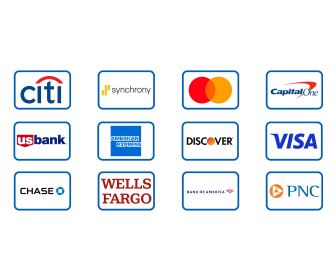How to Compare Credit Cards Like a Pro in Under 10 Minutes
Choosing the right credit card can feel overwhelming — dozens of options, flashy rewards, confusing terms. But here’s the secret: you don’t need hours of research or an economics degree to make the right choice. In less than 10 minutes, you can compare credit cards like a pro by focusing on the factors that actually matter to your wallet and your lifestyle.
1. Know Your Credit Score First
Before comparing cards, find out where you stand. Your credit score determines what cards you qualify for — and the interest rate (APR) you’ll get. You can check your score for free through your bank app or sites like Credit Karma or AnnualCreditReport.com.
- Excellent (750+): You qualify for the best rewards and lowest rates.
- Good (700–749): Most top-tier cards are available to you.
- Fair (640–699): Focus on mid-tier or secured cards to build history.
- Poor (<640): Start with a secured or student card.
2. Identify What You Want From a Card
Not all credit cards are created equal. Decide what you value most — and narrow your search accordingly. This step alone saves hours.
- Cash-back cards: Best for everyday spenders who want simple rewards.
- Travel cards: Great for frequent flyers — think points, miles, and lounge access.
- Low-interest or 0% APR cards: Ideal for paying down balances or large purchases.
- Student or secured cards: Designed for building or rebuilding credit history.
3. Compare These 5 Key Metrics
Once you’ve narrowed your category, focus on the five numbers that make or break a card’s value:
- Annual Fee: What you pay each year just to keep the card. (Sometimes worth it — often not.)
- APR (Interest Rate): If you ever carry a balance, this matters more than rewards.
- Rewards Rate: Look for consistent 1.5–2% cash back or bonus categories you actually use.
- Sign-up Bonus: Make sure you can realistically hit the spending requirement.
- Foreign Transaction Fees: Avoid these if you travel or shop internationally.
4. Calculate Real Value — Not Just Points
Don’t get fooled by marketing. A 5% category sounds great — but if you rarely spend there, it’s meaningless. Estimate how much value a card brings based on your actual spending habits.
Example: If you spend $1,000 monthly and earn 2% cash back, that’s $240 per year. Compare that to the annual fee to see if it’s worth it. Many “no-fee” cards beat premium ones once you do the math.
5. Read the Fine Print (Briefly!)
Don’t skip the boring part. The Schumer Box — the standardized credit card disclosure — lists all key terms in one chart. Scan for:
- Penalty APR (what happens if you miss a payment)
- Intro period length for 0% APR offers
- Foreign transaction fee percentage
- Minimum redemption thresholds for rewards
Expert insight: Comparing credit cards is about fit, not flash. The best card isn’t the one with the most perks — it’s the one that matches your actual spending and repayment habits.
6. Use Comparison Tools (But With Caution)
Websites like Forbes Best Credit Cards, Bankrate, and CreditCards.com provide side-by-side comparisons. They’re helpful — but remember, these sites earn commissions from card issuers. Always double-check details on the bank’s official site before applying.
Final Thoughts
Comparing credit cards doesn’t have to be confusing or time-consuming. Once you understand what matters — your score, your goals, and the real costs — you can confidently choose a card that works for you. Ten minutes of smart research today can save you hundreds of dollars and set you up for long-term financial success.
Not financial advice. Card offers, APRs, and rewards structures change frequently. Always confirm current terms directly with the card issuer before applying.
Continue reading: The Ultimate Comparison: Fixed Annual Fee vs. No Fee Credit Cards · How to Maximize Your Credit Card Welcome Bonus Without Spending More



